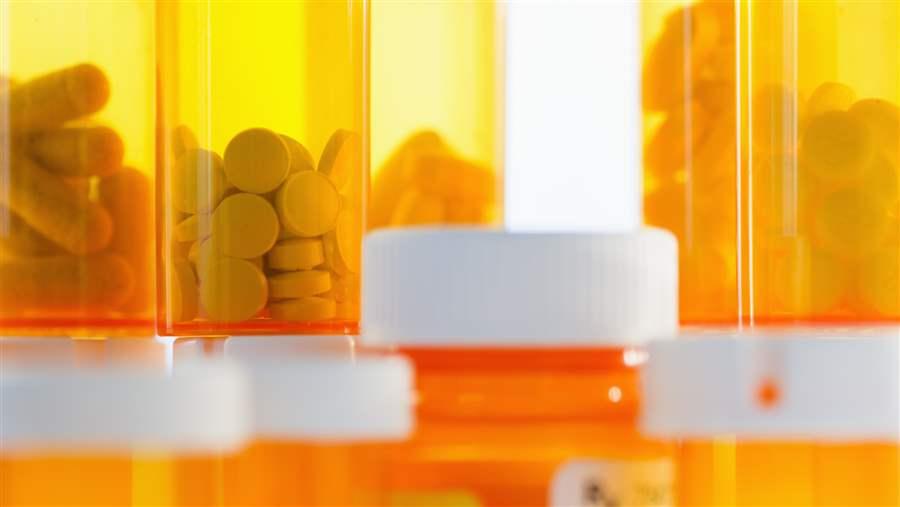What’s Driving Increased Pharmaceutical Spending?
Policymakers need new solutions to manage drug costs and ensure patient access
 © Tom Grill/iStockphoto
© Tom Grill/iStockphotoIMS Health reported that drug spending in the U.S. totaled $310 billion in 2015, an 8.4 percent increase from the previous year.
In April, IMS Health, a pharmaceutical data analytics company, reported that drug spending in the U.S. totaled $310 billion in 2015, an 8.4 percent increase from the previous year. Unlike some other estimates of drug costs, this analysis takes into account the rebates and other discounts that drug companies grant payers to effectively lower the price of drugs compared with their invoiced prices.1 Although the price paid for a specific drug by any payer is proprietary and confidential, the IMS analysis shows the aggregate effect of rebates on drug expenditures and highlights the important drivers of growth in U.S. pharmaceutical spending.
The IMS report identifies several important trends:
-
Rebates to payers from drug manufacturers are more important than ever before. Manufacturers are increasing the list price of drugs, increasing rebates to purchasers, and negotiating different rebates with different payers. The rebates that payers receive depend in part on what they are willing to pay for a drug, and their ability to negotiate with drug companies.
By setting a higher list price for their products, drug companies are able to negotiate prices that are closer to the maximum amount a payer is willing to spend. This pricing strategy relies on laws that make it illegal for payers to resell pharmaceuticals for higher prices and allow manufacturers and purchasers to keep rebate amounts confidential. As a result, drug companies are able to offer larger rebates to some—but not all—drug purchasers without having to reduce prices for all payers.
-
Higher prices for existing branded drugs2 account for only a portion of rising drug spending. IMS estimates that prices for these drugs, after rebates, rose by approximately 2.8 percent, accounting for $4 billion to $6 billion of approximately $24 billion in total spending growth. Therefore, policies that focus exclusively on year-over-year price increases for existing products may have a limited effect on total pharmaceutical spending growth.
2015 was the first year since 2007 in which the volume growth of existing brands contributed to an uptick in total spending. Greater utilization of existing branded drugs accounted for $2.7 billion in additional spending, due in part to the increased use of drugs to treat autoimmune conditions, cancer, blood clots, and mental health conditions. This estimate does not include rebates, so actual spending growth due to utilization was surely lower. Some of the rise in volume can also be attributed to the expanded use of drugs already approved by the U.S. Food and Drug Administration (FDA). In 2014 and 2015, for example, the FDA approved 19 additional indications for existing cancer drugs, more than in the previous four years combined.
- New branded drugs3 are a significant driver of spending growth. Seventy-three new branded drugs came to market in 2015. In the same year, spending on new brands increased by about $24 billion (not accounting for rebates).4 IMS predicts that expenditures on new drugs will grow by $91 billion from 2016 to 2020.
There is rising public and policymaker concern about drug costs, particularly whether patients can afford them and whether rising prices reflect benefits to patients.
Some suggest that increased transparency on drug pricing, including rebates, would allow payers to negotiate more effectively and hold pharmaceutical manufacturers more accountable for the prices they charge,5 while others argue that more transparency could in fact increase costs.6 However, the Congressional Budget Office has concluded that it is unclear what effect greater transparency would have on prices.7
According to IMS, specialty drugs8 now account for 36 percent of total drug spending and 75 percent of spending on new brands. Although these innovative products can deliver significant health benefits to patients compared with existing therapies, many have a very high unit cost by historical standards. Policymakers should focus on ensuring that the new products are used appropriately and that new drug spending is justified by commensurate improvements in clinical outcomes or by reductions in total health spending or other economic returns. And, regardless of a drug’s clinical value, policymakers must ensure affordability for patients.
Allan Coukell is The Pew Charitable Trusts’ senior director for health programs; Chuck Shih leads Pew’s specialty drugs research initiative.
Endnotes
- Invoiced prices are prices paid to wholesalers, which do not include rebates and other discounts that reduce the net revenue of drug manufacturers.
- Existing branded drugs are drugs that have been on the market for a minimum of 24 months and still retain exclusivity.
- New branded drugs are defined as drugs that have been available for less than 24 months.
- IMS does not report net spending for new branded drugs.
- U.S. Department of Health and Human Services, Office of the Assistant Secretary for Planning and Evaluation, “Pricing Practices in the Pharmaceutical Market,” https://aspe.hhs.gov/legacy-page/meeting-summary-pharmaceutical-pricing-practices-utilization-and-costs-149886.
- Beth Kutscher, “Consumers Demand Price Transparency, but at What Cost?”, Modern Healthcare (June 23, 2015), http://www.modernhealthcare.com/article/20150623/NEWS/150629957.
- Congressional Budget Office, “Increasing Transparency in the Pricing of Health Care Services and Pharmaceuticals” (2008), https://www.cbo.gov/sites/default/files/110th-congress-2007-2008/reports/06-05-pricetransparency.pdf.
- Specialty drugs are defined by IMS Health as products that are often injectable, high-cost biologics or other medicines that require cold-chain distribution. They are mostly initiated by specialists, include treatments for cancer and other chronic conditions, and often require complex patient follow-up and monitoring.






